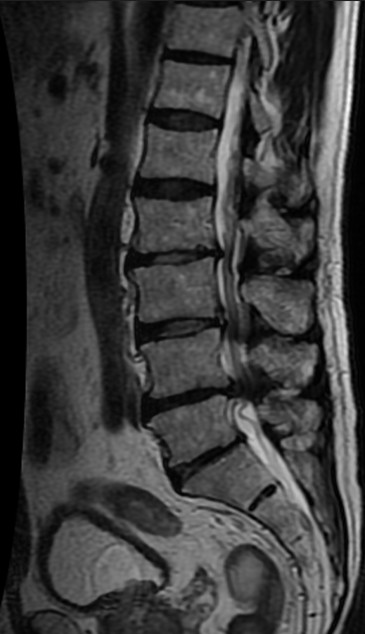Pathophysiology
- Narrowing of the spinal canal secondary to degenerative changes in the lower back including bulging of discs, thickening of ligaments
- Narrowing results in compression of the spinal nerves or spinal cord (myelopathy), and of the blood vessels supplying to the nerves
Clinical Features
- Bilateral back, buttock/thigh/leg pain, with associated numbness, tingling, weakness
- Symptoms are exacerbated when walking/ exertion, or prolonged standing - claudication.
- Symptoms are exacerbated by back extension, and relieved by flexion which increases the canal space - trolley cart sign.
- Symptoms are relieved by rest, or sitting down/leaning forwards
Investigations
- 1st line: MRI

Management
Management should be individualised based on symptom severity, patient comorbidities, and response to conservative therapies.
- Conservative Treatments:
- Physical therapy: Strengthening and flexibility exercises to relieve pressure on the spine.
- Pain relief: Nonsteroidal anti-inflammatory drugs (NSAIDs), paracetamol etc.
- Epidural steroid injections: To reduce inflammation and pain.
- Surgical Treatments:
- Decompression surgery: Laminectomy or laminotomy to relieve pressure on spinal nerves.
- Spinal fusion: In cases of instability or spondylolisthesis, fusion may be performed to stabilise the spine.
- Minimally invasive procedures: Options like interspinous process devices to open up the spinal canal may be considered.
